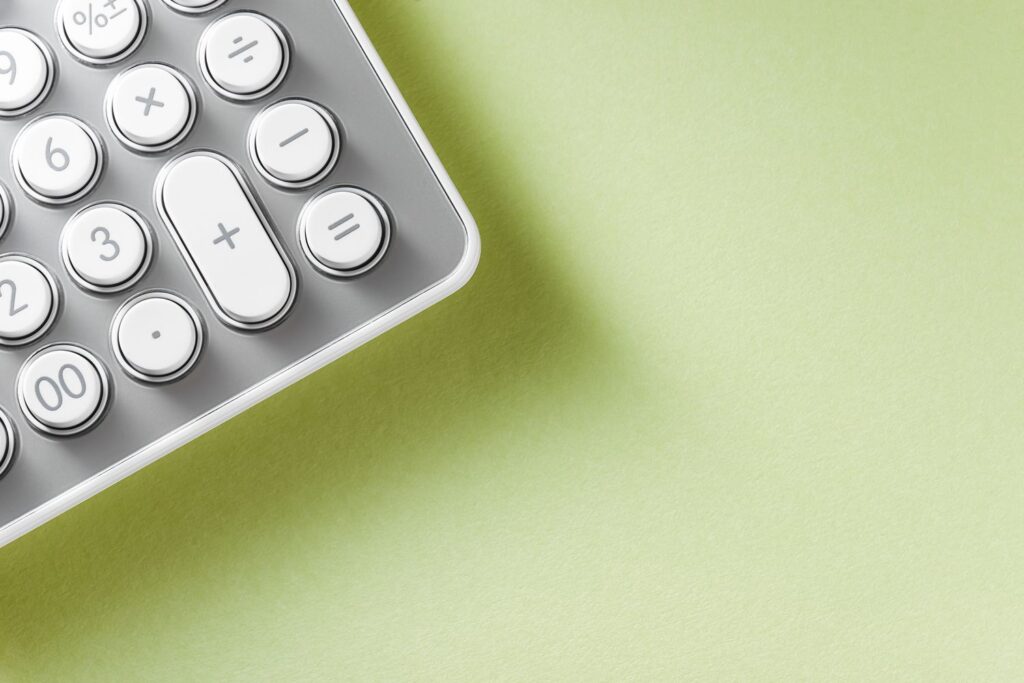Components of the Budget
To use this calculator, input your income and expenses above. Each expense area is broken into subcategories. Click the plus sign to see the subcategories. If you see an “i” next to the subcategory name, you can hover over that to see a guideline for what that number might be if you don’t have the exact figure at hand.
Here are the general categories of income and expenses you’ll input:
- Income: Your total take-home income, including any money you earn from side hustles, alimony, child support, part-time jobs, etc.
- Housing: Your rent or mortgage payment. You can also account for other necessary housing-related expenses, like utility bills, homeowners or renters insurance, and maintenance bills.
- Food: What you spend on food from the grocery store, eating out at restaurants, getting takeout, or meal delivery services.
- Transportation: Public transportation like buses, but also car-related expenses, including your monthly loan payment, repairs, insurance, tolls, and fuel.
- Education: Tuition, supplies, fees, etc. for children in K-12 and adults going to college. Also include any student loan payments you have.
- Personal and family: Cellphone bills, entertainment—including TV streaming services like Netflix and other subscriptions like Spotify—fitness, pet expenses, household supplies, personal care (haircuts, toiletries, etc.), and clothing. This category also includes debt payments (outside of mortgages and student loans) and vacation expenses.
- Health care: This includes all the out-of-pocket costs for health insurance, dental insurance, and vision insurance, such as premiums (if they’re not deducted from a paycheck), copays, coinsurance, and deductibles. It also includes medications, glasses or contacts, and the like.
- Savings and investments: Money that you regularly save for an emergency fund or vacation fund, as well as long-term goals like college, retirement, and a home.
- Other: This is for all other expenses that don’t quite fit in any of the categories above.
Budgeting Calculator Results Explained
Here’s how to interpret what the calculator computes:
- Total monthly income: This is the same as what you entered above.
- Total monthly expenses: This is the total amount of money you’re spending each month. Your goal is to make sure your expenses are less than your income so that you’re not relying on savings or debt to get by.
- Percentages of your budget: The pie chart shows the percentage of your budget each expense eats up. You can compare these with established guidelines, such as the 50/30/20 budgeting rule.
- Remaining monthly funds: This is how much you have left each month. It’s the gap between how much you bring in and how much you spend. The bigger the gap, the better, because then you’ll have more money to save for big goals like retiring or buying a home.
How To Use This Budgeting Calculator to Improve Your Finances
This budget shows you how you’re currently spending your money. That’s good for establishing a baseline, but you can take it a step further by playing around with the calculator and entering new numbers. For example, you can see how much you’ll have left over each month if you move to a cheaper apartment, spend less on groceries, or cancel that Hulu subscription.
Once you’re happy with how much money you have allocated to each category, you can write these numbers down as a guide, but don’t stop there. A plan is good in theory, after all, but it doesn’t become real until you actually follow it. Track your spending against your budget each month with budgeting software programs or apps, or even just pen and paper.
What To Do If Your Expenses Are More Than Your Income
If your expenses are higher than your income, know that you’re not alone. That said, it’s good to get your expenses under control if you can, because otherwise you’ll fall deeper into debt. Here are some things you can do:
- Find ways to boost your income: Whether it’s working a side hustle or a part-time job or asking for a raise at your current job, finding a way to boost the income side of the equation can have the biggest impact of all.
- Review your spending: It’s easy to guesstimate your spending with the calculator above. But going through your bank statements to see what you really spend can help you find areas you can work on.
- Negotiate with creditors: If debt payments are pushing you into the red, reach out to your creditors. You can ask a lender for a modified payment plan or refinance your debt into more manageable payments.
- Do a no-spend challenge: Try to eliminate spending for a month (or several) on a problem area in your budget, such as clothing or entertainment. This doesn’t mean you deprive yourself of these things forever; it just normalizes not spending as much money on them and finding cheaper alternatives.
- Seek help: The National Foundation for Credit Counseling is a reputable nonprofit organization that offers financial planning help. You can get personalized budget assistance and help with more complicated things, like negotiating with your creditors or finding out which financial assistance programs you qualify for.
Where To Put Extra Money If You’re Under Budget
If you have money left over at the end of the month, congrats! Now you can really move your financial situation forward. Here are a few things you can do—ranked by importance—with that extra money.
- Put it in your emergency fund: While you had a good month now, it probably won’t always be that way. If you don’t have a fully funded emergency fund, this is a great place to put that money.
- Pay down debt: If you have debt, now’s a good time to knock some of it down. Debt with a high interest rate is generally better to pay off before lower-interest debt, since that’ll save you more in the long run.
- Save it for later: If you have a savings goal you’re trying to reach, such as saving for a house, that extra money can go a long way. You can also consider parking it in your retirement account.
What Is a Budget?
A formal budget is a plan for how you want to spend your income. It can be as fancy as a spreadsheet or software program or as simple as a list of income and expense categories and amounts written on a sheet of paper. It’s a way to make sure you’re not spending more than you’re earning and that you have enough left over to reach your financial goals.
Without a budget, it’s easy to lose track of spending and have nothing left to show for your hard work. Budgets solve that problem by giving you a plan to stick to.
Benefits of Using a Budget
There are a lot of reasons to use a budget:
- Less stress: Even though budgets can be challenging at first, in the long run they can lower your stress by helping ensure you’ve got all your expenses covered and can save for the future. Money is cited as a source of stress for most people, and budgets can help to solve these financial problems over time.
- Prepare for emergencies: Your budget should include saving for an emergency fund that can keep you from going into debt if you lose a job or have an unexpected expense.
- Reach your big financial goals: Budgets make sure you have enough for your everyday spending and those longer-term goals that are hard to save for.
- Better credit score: Budgets can help you plan your debt payments each month. By paying on time, you’ll see your credit score rise over time.
Tips for Sticking to a Budget
Sticking with a budget isn’t always easy. Here are some tips for how to stay with it:
- Reframe it as a “spending plan”: The word “budget” has a negative connotation for some of us. It sounds like your parents lecturing you when you were a child. So instead of thinking of it as a “budget,” think of it as a “spending plan” to help you get where you want to go.
- Do it often: It’s harder to keep up with your budget if you wait too long between check-ins, because it’ll be harder to track down expenses and make sure everything adds up. Getting in the habit of checking in on your spending—like every week—can be a big help.
- Reward yourself: Give yourself a little extra motivation to follow your budget by setting up a rewards system. For example, if you’re under budget or if you keep up with your budget for a few months in a row, you can reward yourself with something you can afford and appreciate.
- Set budget date nights: If you have a spouse or partner, make a point to check in with them regularly. You can even set up fun “budget date nights” so it’s not a chore.
Other Budgeting Tools
Budgeting is tough, but the good news is that there are lots of tools that can help you. Here are a few places to get started:
- Budgeting apps: If you use your smartphone a lot, having a budget app to keep you on track while you’re on the go can be a big help. These apps often provide a quick snapshot and can link up automatically with your credit card or bank account for real-time updates.
- Budgeting software: If you prefer to dig into the nitty-gritty of how you spend, a budgeting software program can be a powerful tool to help you stay on track.
- Personal finance software: These programs go beyond your budget and show you your entire financial picture, such as your net worth, debt amounts, investments, and a lot more.
Read the full article here












